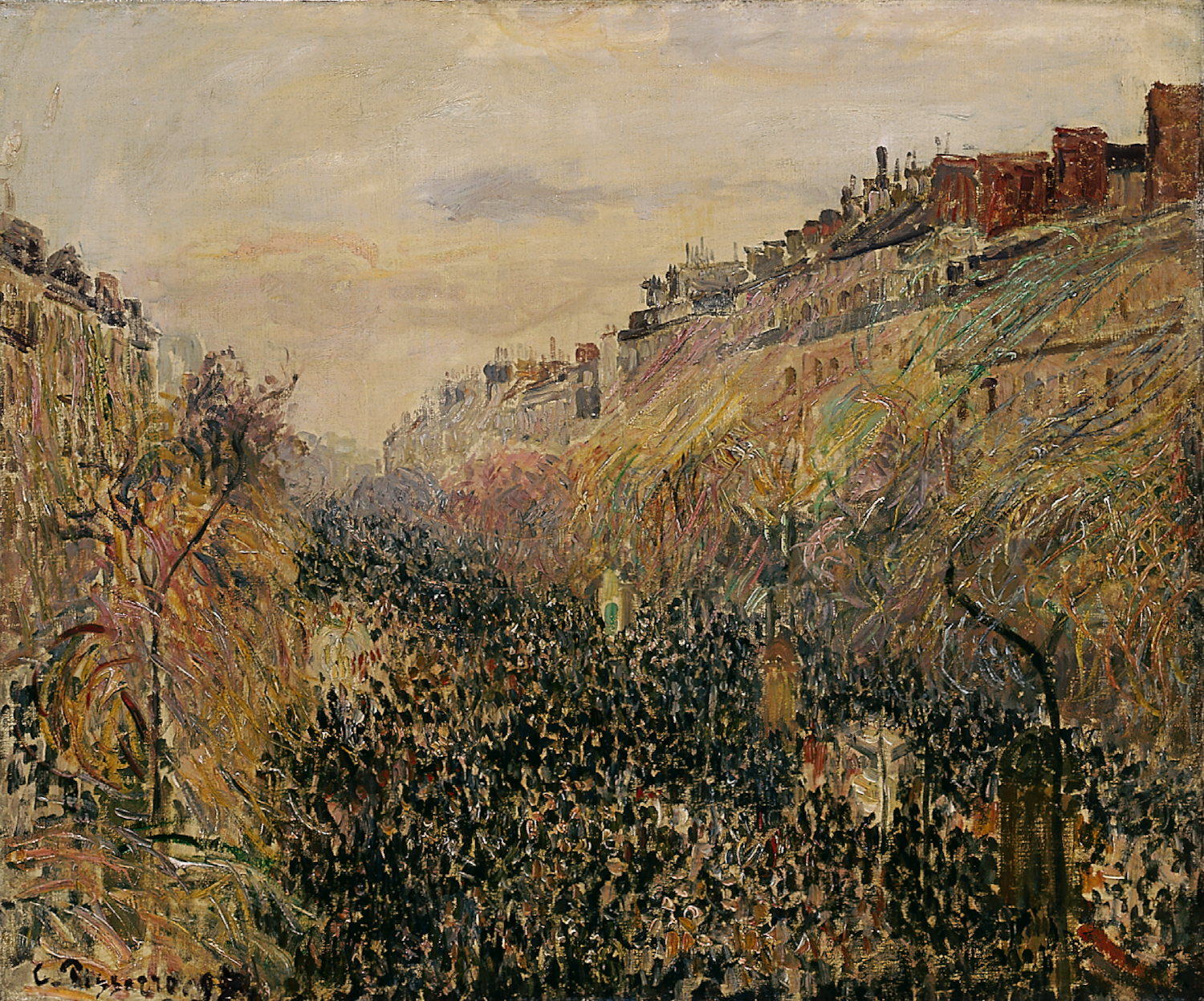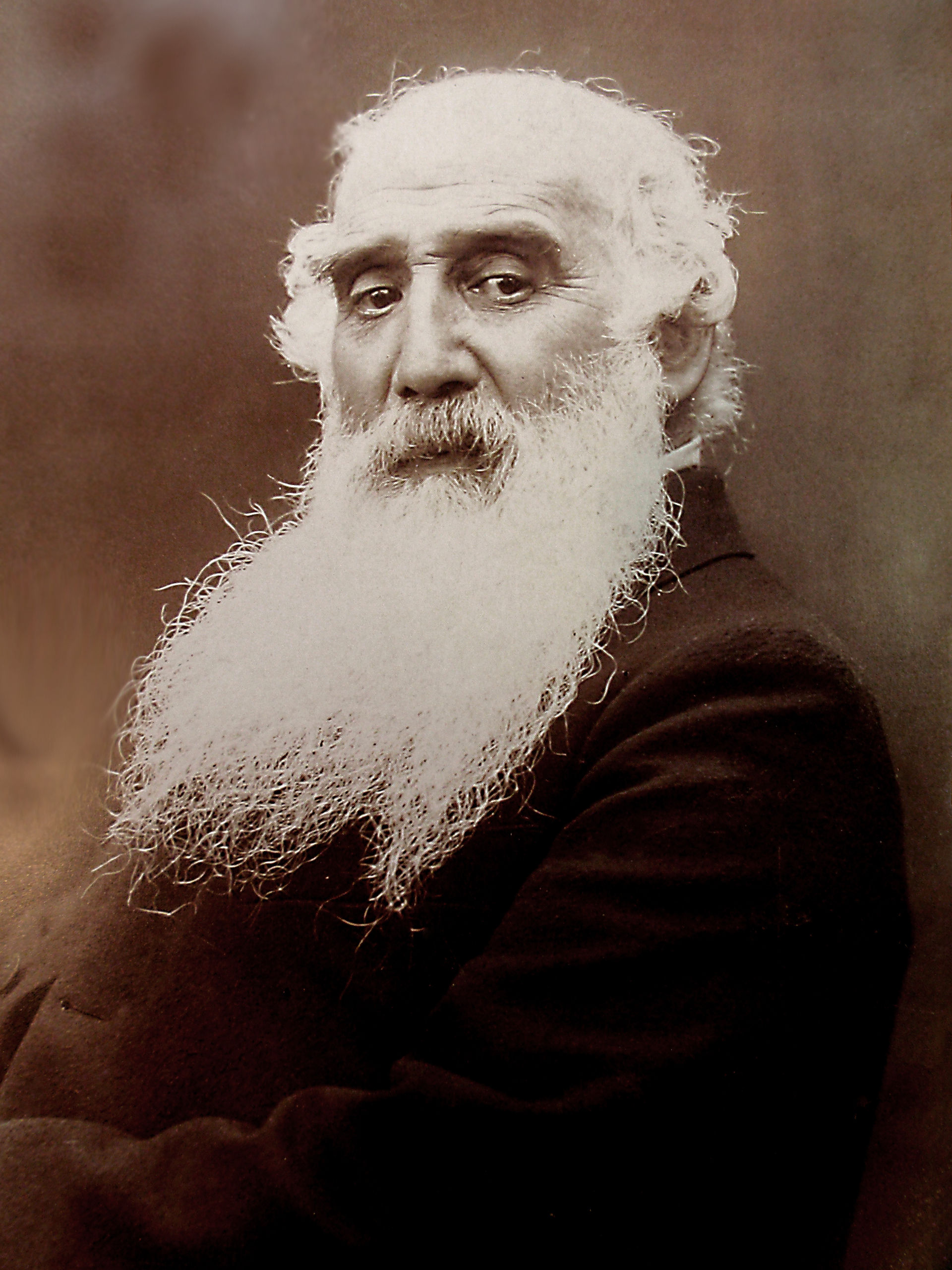Camille Pissarro is one of the first Impressionist painters. He was interested not only in the pictorial change; in Impressionism he saw the expression of his social-anarchist convictions. Impressionist painting meant confrontation with contemporary life.
For many years Pissarro was the painter of the French landscape. Only at an advanced age did he take Parisian street life as a motif. His dealer, Durand-Ruel, had encouraged him to do so because he hoped for better sales with such paintings. In February 1897, Pissarro rented a hotel room with a view of the Boulevard Montmartre. According to letters he wrote to his son, he spent the whole day on this vantage point. He eagerly awaited the parade of the Mardi Gras, the highlight of the carnival, and had made the necessary preparations to paint this folk festival.
The time for this was limited. That is why the painting is spontaneous and sketchy, and the white canvas is often visible. On the Boulevard you can see the crowd of people and in the middle, an advertising pillar (kiosk). Colorful paper streamers fall from the houses into the scene. They mingle with the still bare trees on the boulevard. Dark spots and colorful stripes create the impression of a festive frenzy. The moving crowd in the city was a new theme in painting. As a result, Pissarro led Impressionism into the 20th century.
We present today's painting thanks to the Kunst Museum Winterthur. <3
P.S. Montmartre was an inspiration for many famous painters! Read more about it here!


 Camille Pissarro
Camille Pissarro